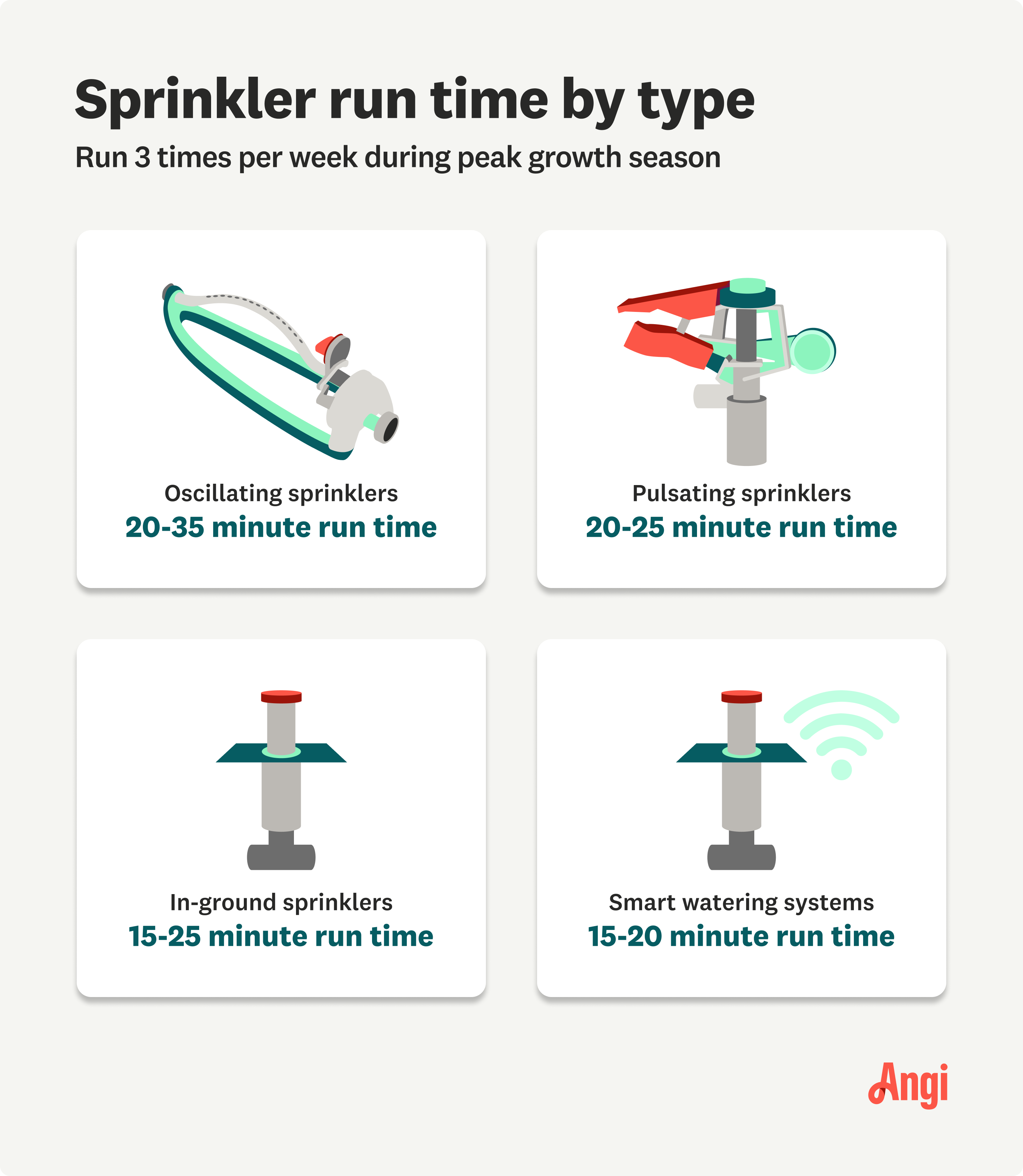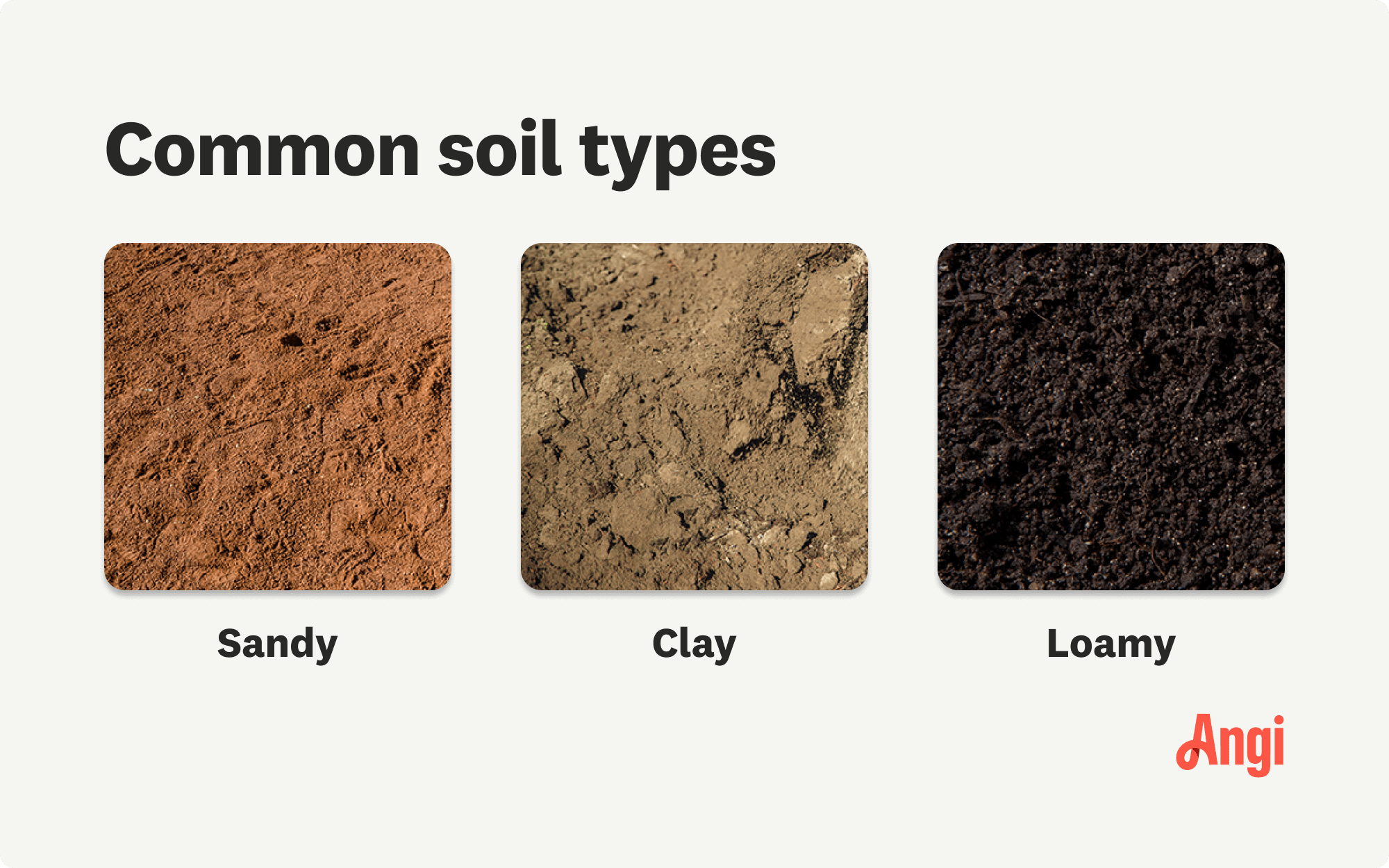
Discover drip irrigation system cost estimates, key price factors, and ways to save. Get transparent pricing to plan your home irrigation project confidently.
Run, sprinkler, run!


Many rely on sprinkler systems to keep their grass green and healthy, but the burning question remains: How long should you run your sprinklers? An average in-ground sprinkler system delivers 1/2 inch of water per zone within a half-hour session. To effectively nourish your lawn, this means running each zone of your sprinkler system for roughly 30 minutes, three times per week in the mornings. This watering routine ensures that your lawn receives the appropriate amount of hydration it needs to thrive.
While this is a general guideline, you’ll need to consider factors like weather, soil type, and the specific needs of your grass.

Drought conditions can significantly impact your regular watering routine. During periods of drought, your lawn may experience increased water stress, demanding more careful attention to hydration. Adjusting your watering schedule, prioritizing deep watering, and monitoring your lawn's moisture levels become essential steps in helping your grass survive and thrive in the face of water scarcity.

Watering warm-season and cool-season grasses requires tailored approaches due to their distinct needs. Warm-season grasses like Bermuda or Zoysia thrive in hot climates and typically require more frequent watering during the warmer months. In contrast, cool-season grasses such as Kentucky Bluegrass and fescue prefer milder temperatures and need less frequent irrigation. Understanding your grass type and its specific watering requirements is crucial for maintaining a healthy and vibrant lawn.
| Cool-Season Grasses | Warm-Season Grasses |
|---|---|
| Kentucky Bluegrass | Bermuda |
| Fescue | Zoysia |
| Ryegrass | Bahia |
| Bentgrass | St. Augustine |

Some soil types retain water better than others. If you have soil with a higher water retention rate, you won’t need to water it as long as you would with soils that don’t hold water as well.
| Sandy Soil | Loamy Soil | Clay Soil |
|---|---|---|
| Doesn’t retain water well | Retains water at an average rate | Retains water incredibly well |
| Needs more frequent watering for longer | Needs average watering frequency and time | Needs less watering for less time |
Underwatering can lead to dry, brown patches, while over-irrigation can result in waterlogged soil and other problems. When you don't water your lawn enough, it can suffer in several ways. Grass may turn brown and start to wither, and the soil can become compacted. Under-watered lawns are more susceptible to weed infestations and are less able to recover from stress caused by foot traffic or weather extremes.
Overwatering can be just as harmful. Excess moisture can lead to shallow root growth, making your lawn more vulnerable to drought conditions. It can also create a breeding ground for fungi and pests, such as mushrooms and grubs. Furthermore, overwatering can result in higher water bills and wasted resources.

Ensuring your lawn gets the right amount of water can be challenging, especially when you factor in rain and the unpredictability of your sprinkler system. Let's explore some methods you can use to confirm how much water your lawn is actually getting.
Your sprinkler system's flow rate is usually measured in gallons per minute (GPM). You can find this information in your system's manufacturer documentation or by contacting the manufacturer directly. Understanding this information can help you calculate how long you should run your sprinklers to achieve the desired watering depth.
Calculate zone watering time: Divide the desired watering depth (in inches) by the system's GPM. This will give you the amount of time needed to apply 1 inch of water to your lawn for a specific zone.
Adjust for multiple zones: Repeat the calculation for each zone. Each zone may require a different amount of watering time to reach the desired depth.
Set your sprinkler timer: Schedule the calculated watering times for each zone. Ensure you run your sprinklers in the morning for the best lawn health.
For a simpler, more hands-on approach, you can perform the "Tuna Can Test" on your lawn to measure the amount of water it’s getting. This simple test involves placing empty tuna cans around your lawn and running your sprinklers. Afterward, measure the water collected in the cans to gauge how much water your lawn is receiving.
When your sprinkler system requires repair, it's essential to take swift action. Look out for uneven watering, leaks, or malfunctioning heads. DIY fixes may work for minor issues, but for complex problems, you should seek professional help from a local sprinkler company. They have the expertise to diagnose and address issues efficiently, ensuring your system operates at its best and your lawn remains healthy and well-irrigated.
From average costs to expert advice, get all the answers you need to get your job done.

Discover drip irrigation system cost estimates, key price factors, and ways to save. Get transparent pricing to plan your home irrigation project confidently.

Discover the average outdoor misting system cost, key price factors, and tips to save money on installation and maintenance for your home.

The drainage method, number of sprinkler zones, and whether you DIY influence how much it costs to winterize your sprinkler system.

Low flow irrigation systems are a great way to make sure you’re keeping your lawn watered while being conscious of how much water you’re using.

Learning how to convert your sprinkler to drip irrigation saves you money on water use and reduces weed growth. Follow this guide to learn how to do it.

Need an effective solution for watering your garden? Here are four types of drip irrigation systems that can help you nurture your plants to perfection.